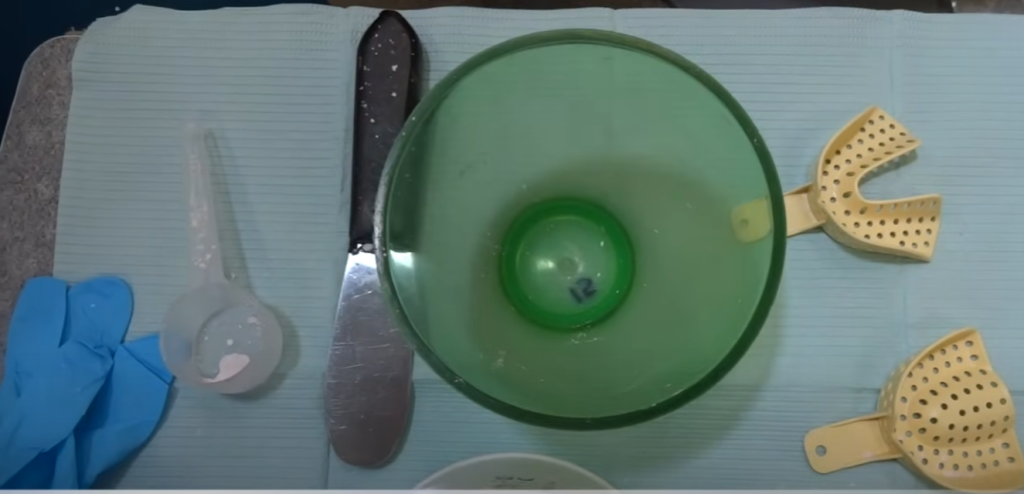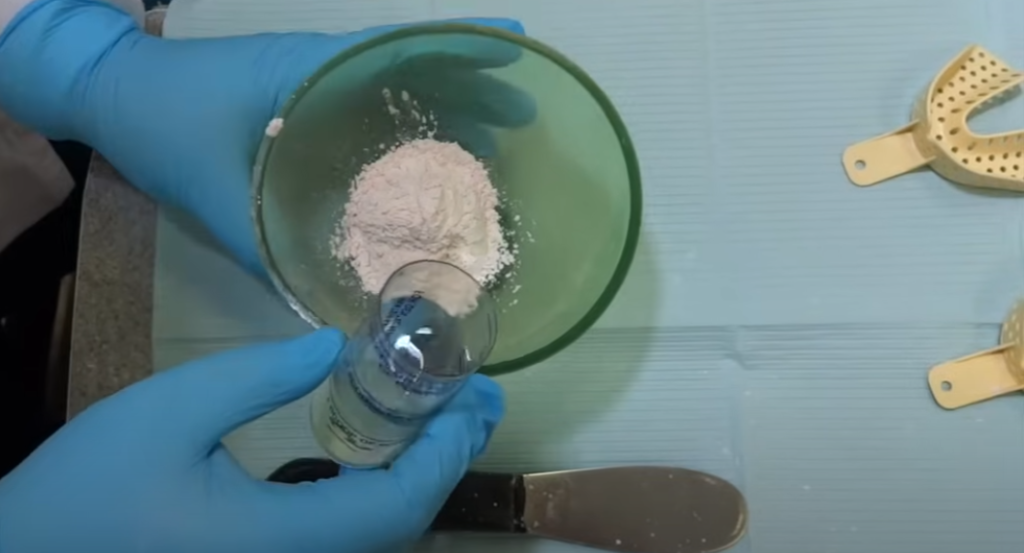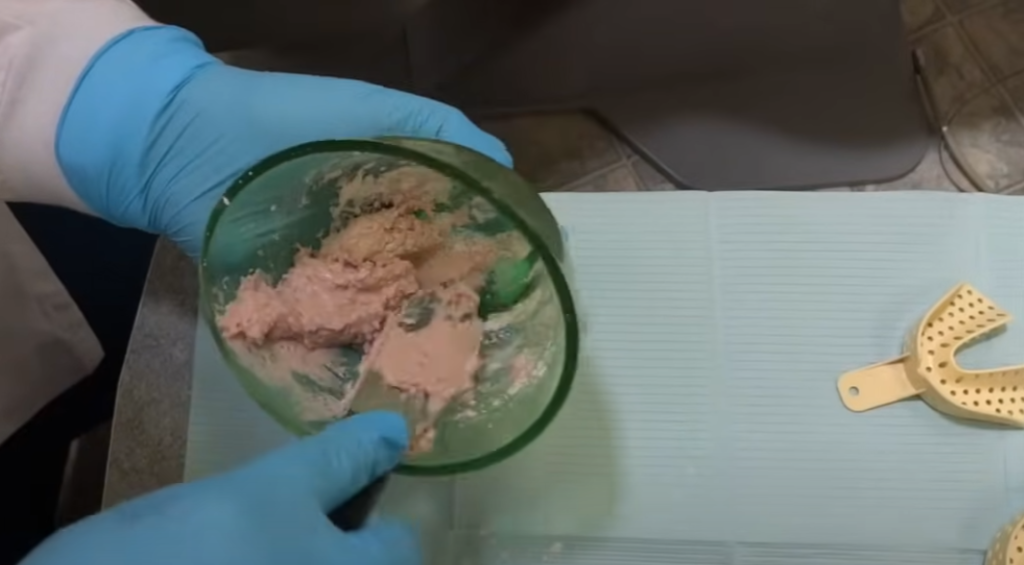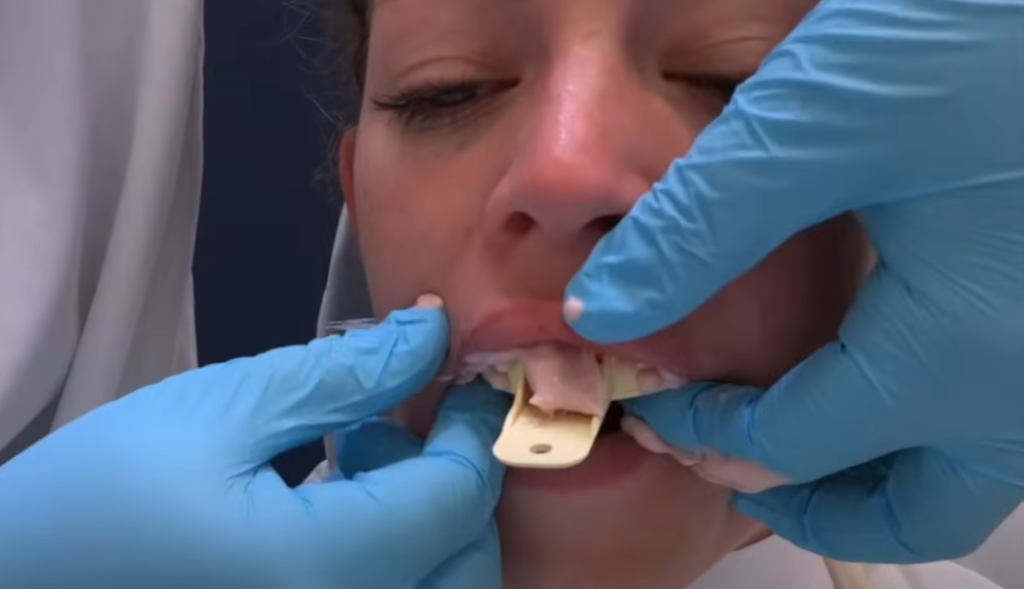
When you visit your dentist, one common procedure you might encounter is taking an impression of your teeth and gums. This process captures the shape and alignment of your teeth to create a precise model for various dental treatments. One of the most commonly used materials for this purpose is dental alginate.
What is Dental Alginate?

Dental alginate is an aqueous hydrocolloid, meaning it is a gel-like material that can hold water. It is inherently hydrophilic (water-loving), which allows it to easily wet the oral tissues, creating detailed and accurate impressions of your teeth and gums. Dental alginate is primarily composed of sodium alginate, which is derived from seaweed, making it a natural and biocompatible choice for dental use.
In addition to alginate, there are many other materials used for dental impressions, each with its own specific strengths, weaknesses, and use cases:
- Silicones (PVS): Known for their accuracy and dimensional stability.
- Polyether: Recognized for their good flow properties and detail reproduction.
- Agar (Reversible Hydrocolloid): Reusable and provides excellent detail but requires special equipment for use.
- Zinc Oxide-Eugenol: Used mainly for edentulous impressions (impressions of areas without teeth).
- Impression Plaster: Used in some specialized cases for edentulous patients.
- Digital Impression: Combines high accuracy with no mess.
Why Do Dentists Use Alginate Impressions?
Taking impressions is a crucial step in many dental procedures, including:
- Evaluating Patients’ Dentition: Impressions allow dentists to examine your teeth and gums from angles that are impossible to see directly in your mouth.
- Fabricating Indirect Restorations: In dental labs, these impressions are used to create crowns, bridges, dentures, and other restorations that fit perfectly in your mouth.
Steps for Taking an Alginate Impression
Gathering Materials

Before starting the impression process, the dentist gathers all the necessary materials. This includes alginate powder, water, an impression tray, a mixing bowl, and a spatula. Ensuring all materials are prepared and within reach is crucial for a smooth and efficient procedure.
Adding Alginate Powder and Water

The dentist measures the appropriate amount of alginate powder and water. The ratio of powder to water must be precise to achieve the correct consistency. This measurement is critical, as it directly affects the working and setting times of the alginate material.
Mixing Alginate

The alginate powder and water are then mixed thoroughly in a bowl. The mixing process involves quickly and vigorously combining the ingredients to create a smooth, homogeneous paste.
- Regular Setting Alginate (Green): Has a longer working time, allowing more time to place the material accurately.
- Fast Setting Alginate (Pink): Sets more quickly, which can be beneficial for patients who have difficulty sitting still for longer periods.
The temperature of the water used to mix the alginate can also significantly influences the setting time:
- Cooler Water (10°C): Longer setting time (around 4 minutes).
- Warmer Water (40°C): Shorter setting time (around 1 minute).
Placing Alginate into Impression Tray

Once the alginate is mixed to the desired consistency, it is scooped into the impression tray. The tray must be filled evenly to ensure that all areas of the dental arch are captured. The dentist ensures there are no air bubbles or voids in the material, as these can affect the accuracy of the impression.
Placing Tray in Patient’s Mouth

The dentist carefully places the filled impression tray into the patient’s mouth, positioning it to cover the teeth and gums entirely. The tray must be held firmly but gently to avoid discomfort while ensuring that it remains in the correct position.
Allow Alginate to Set

With the tray in place, the alginate material is allowed to set. The setting time varies based on the type of alginate used (regular or fast setting) and the temperature of the water mixed with the powder. During this time, the patient must remain still to avoid any movement that could distort the impression.
Pour up Impression Material

After the alginate has fully set, the tray is carefully removed from the patient’s mouth. The impression is then ready for the next step, which involves pouring dental stone (gypsum) or plaster into the impression to create a solid model of the teeth and gums. This model will be used to fabricate dental restorations or appliances.
Setting Mechanism of Alginate
The setting process of dental alginate involves a chemical reaction between sodium alginate and calcium sulfate. This reaction converts the liquid mixture into a gel:
- Initial Reaction with Tri-sodium Phosphate:
- When mixed with water, tri-sodium phosphate in the alginate reacts with calcium sulfate. This reaction acts as a retarder, delaying the immediate setting of the alginate to provide sufficient working time.
- 2Na3PO4+3CaSO4→Ca3(PO4)2+3Na2SO4
- Main Setting Reaction:
- After the initial retarder is used up, the sodium alginate reacts with the remaining calcium sulfate. This forms calcium alginate, which is insoluble in water and creates a gel-like structure.
- Na alginate+CaSO4→Ca alginate+Na2SO4
Working Time and Setting Time
- Working Time: This is the period during which the alginate mixture remains pliable and can be manipulated. The working time allows the dentist to place the alginate into the impression tray and position it in the patient’s mouth without the material setting prematurely.
- Setting Time: Once the working time is over, the alginate begins to set. The setting time is the duration from the end of the working time until the material is fully set. During this phase, any movement can cause permanent distortion of the impression.
Conclusion
Dental alginate impressions are a cornerstone of modern dentistry, providing accurate and detailed models for various treatments. Understanding this process helps patients appreciate the care and precision involved in creating restorations that fit perfectly and function correctly. Next time you’re in the dental chair, you’ll have a better understanding of the importance and functionality of dental alginate impressions.
Disclaimer
The contents of this website, such as text, graphics, images, and other material are for informational purposes only and are not intended to be substituted for professional medical advice, diagnosis, or treatment. Nothing on this website constitutes the practice of medicine, law or any other regulated profession.
No two mouths are the same, and each oral situation is unique. As such, it isn’t possible to give comprehensive advice or diagnose oral conditions based on articles alone. The best way to ensure you’re getting the best dental care possible is to visit a dentist in person for an examination and consultation.
SAVE TIME AND MONEY AT ANY DENTIST

Less dental work is healthier for you. Learn what you can do to minimize the cost of dental procedures and avoid the dentist altogether!

